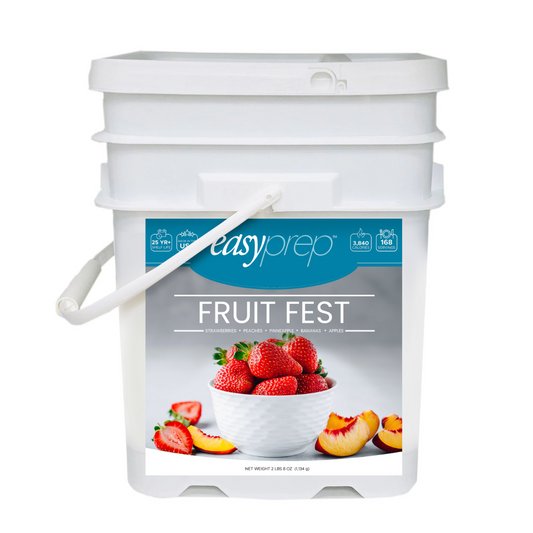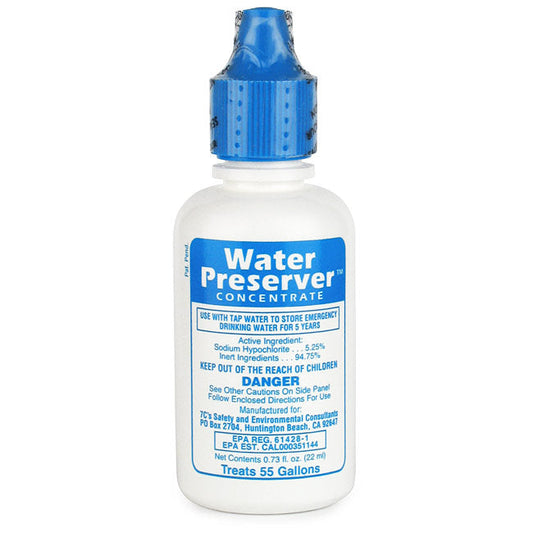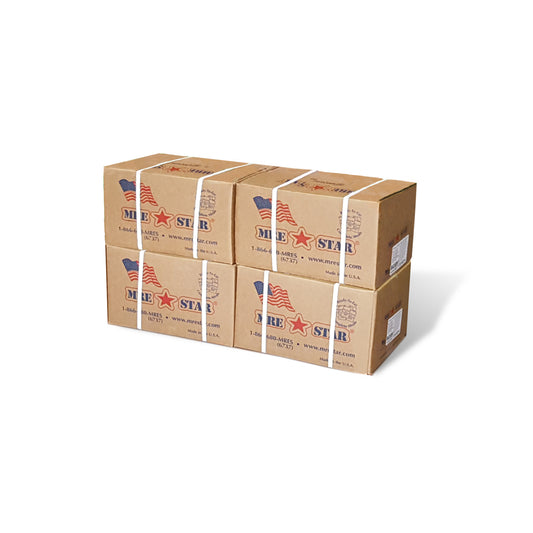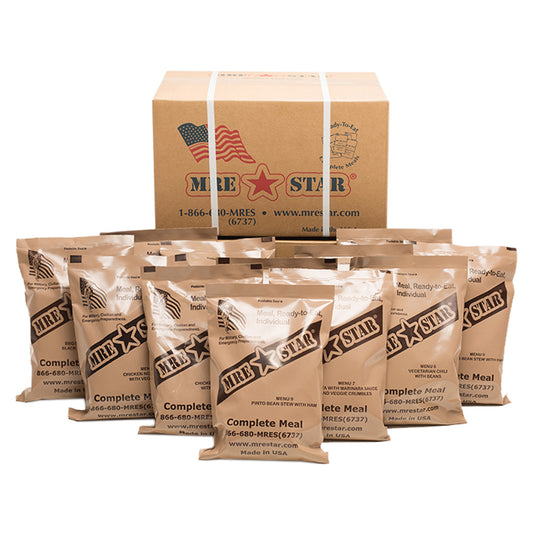Hunting with a Homemade Bow
05 Mar 2013
If you are stuck in the woods and need to hunt for food, how are you going to do it? Knowing how to make a bow and arrow would definitely come in handy!
Obviously a simple 22.-caliber rifle would have more accuracy from a long distance, but you might be able to use a homemade bow and arrow to snag a meal from 10-50 feet. Remember though; don’t rely on a single method of hunting. You can use a combination of bow and arrow, snares and scavenging to survive in the wilderness.
- How can you make a simple snare? -
Check out this tutorial below to find out how you can use simple supplies in order to create a bow and arrow in the wild. Remember to be careful when you practice making a bow and arrow and work at your own risk.
The Bow
 Wood Selection
There is a wide selection of wood that will work well for a bow. Woods that work well include yew, willow, cedar, locust, ash, hickory, elm, ash, maple or birch. Avoid pine or dead tree branches. You’ll want to choose greener saplings or shoots. Cut 2-3 potential shafts as you’re looking.
Bow Size
You’ll want to cut off branches, saplings or shoots that are about 50-60 inches long. As a rule of thumb, cut branches that measure from the ground to your neck. The bow should also measure at least 1 inch in its diameter in the center and 3/4 inches at the edges.
- 14 Beautiful Flowers that You Can Eat -
Cutting the Bow
When you’re cutting the branch for the bow, be sure to use a saw or knife to cut it away. Never bend and break the branch off. Look for a branch that has very few knots and branches. You want to cut off as little as possible.
Making the Handle
There are two main sections that you’ll want to plan for in the handle: The rest and the hand grip. The hand grip can be made by just wrapping the area with leather. If you don’t have leather you can also use items like duct tape or cloth.
The other important aspect of the handle is the notch where the arrow will rest. You can cut a slight notch into the side of the wood right above the handle. If you’d like to accentuate the notch, you can place a stone underneath the leather to give you a larger notch to hang your arrow on.
Placing the String
On the outer edges of the bow, cut two v-shaped notches. Make the smaller end of the V's point toward the inside of the bow. If you are worried that the bow might break apart at the edges, feel free to bind them with duct tape or another material that you have available.
- Rope Making 101 -
Now that you have the notches cut for the bow, choose a string that’s roughly 12 inches longer than your bow. You can use nylon twine, string, a leather strip or even shoelaces.
Wood Selection
There is a wide selection of wood that will work well for a bow. Woods that work well include yew, willow, cedar, locust, ash, hickory, elm, ash, maple or birch. Avoid pine or dead tree branches. You’ll want to choose greener saplings or shoots. Cut 2-3 potential shafts as you’re looking.
Bow Size
You’ll want to cut off branches, saplings or shoots that are about 50-60 inches long. As a rule of thumb, cut branches that measure from the ground to your neck. The bow should also measure at least 1 inch in its diameter in the center and 3/4 inches at the edges.
- 14 Beautiful Flowers that You Can Eat -
Cutting the Bow
When you’re cutting the branch for the bow, be sure to use a saw or knife to cut it away. Never bend and break the branch off. Look for a branch that has very few knots and branches. You want to cut off as little as possible.
Making the Handle
There are two main sections that you’ll want to plan for in the handle: The rest and the hand grip. The hand grip can be made by just wrapping the area with leather. If you don’t have leather you can also use items like duct tape or cloth.
The other important aspect of the handle is the notch where the arrow will rest. You can cut a slight notch into the side of the wood right above the handle. If you’d like to accentuate the notch, you can place a stone underneath the leather to give you a larger notch to hang your arrow on.
Placing the String
On the outer edges of the bow, cut two v-shaped notches. Make the smaller end of the V's point toward the inside of the bow. If you are worried that the bow might break apart at the edges, feel free to bind them with duct tape or another material that you have available.
- Rope Making 101 -
Now that you have the notches cut for the bow, choose a string that’s roughly 12 inches longer than your bow. You can use nylon twine, string, a leather strip or even shoelaces.
 Tie one end of the string to the bottom of the bow. On the other end of the string, make a loop or slip knot that is about 6 inches shorter than your bow. You’ll then use your leg to hold the bow out as you attach the loop to the other side of the bow. (pictures below) Be sure to unstring the bow if you’re not using it. You don’t want the strand to lose its spring.
The Arrows
Wood Choice
Just like a bow, you’ll want to choose any straight sapling or shoot without branches or knots.
Length and Size
Usually a good arrow measures about 24-30 inches long and is about 1/4 - 1/2 inches in diameter. Typically, a shorter arrow remains straighter and they usually fly better and don’t break as easily.
Preparing the Arrow
The first thing you’ll want to do is remove the bark from the arrow. When you do so, cut straight so that you remove the bark but keep as much of the branch as possible. If you’re going to be using the arrows for multiple days, tie them together to ensure that they don’t warp and they keep each other straight. Ideally, you’d cure the arrows for 1-10 days (not in direct sunlight) straightening them each day. However, in an emergency that might not be an option.
You’ll cut a slight notch in the back end of the arrow to sit in the string of the bow. To prevent the arrow from breaking apart on the back end, you can tie string around the tail.
Prepare the tip of the arrow by cutting it into a point and charring it over coals if you have the option. This will harden the point a bit so it’s not as soft and green. Adding an arrow head will allow you to hunt larger animals like deer. With a simple sharpened edge, you can kill smaller game like rabbits.
Practice
The best thing that you can do is practice with your bows and arrows before you use them. Shoot the arrows at soft items (pile of leaves, patch of moss, etc.) to figure out which ones shoot straight and which ones don’t.
Have you Made a Bow?
Comment below to tell us what tips and tricks you have? Have you made a bow before? Tell us your advice and how it went for you. We’d love to get your advice too.
You might also be interested in:
- How to Navigate Using the Stars, Sun and Moon -
- Make a Paracord Drawstring Pouch -
Tie one end of the string to the bottom of the bow. On the other end of the string, make a loop or slip knot that is about 6 inches shorter than your bow. You’ll then use your leg to hold the bow out as you attach the loop to the other side of the bow. (pictures below) Be sure to unstring the bow if you’re not using it. You don’t want the strand to lose its spring.
The Arrows
Wood Choice
Just like a bow, you’ll want to choose any straight sapling or shoot without branches or knots.
Length and Size
Usually a good arrow measures about 24-30 inches long and is about 1/4 - 1/2 inches in diameter. Typically, a shorter arrow remains straighter and they usually fly better and don’t break as easily.
Preparing the Arrow
The first thing you’ll want to do is remove the bark from the arrow. When you do so, cut straight so that you remove the bark but keep as much of the branch as possible. If you’re going to be using the arrows for multiple days, tie them together to ensure that they don’t warp and they keep each other straight. Ideally, you’d cure the arrows for 1-10 days (not in direct sunlight) straightening them each day. However, in an emergency that might not be an option.
You’ll cut a slight notch in the back end of the arrow to sit in the string of the bow. To prevent the arrow from breaking apart on the back end, you can tie string around the tail.
Prepare the tip of the arrow by cutting it into a point and charring it over coals if you have the option. This will harden the point a bit so it’s not as soft and green. Adding an arrow head will allow you to hunt larger animals like deer. With a simple sharpened edge, you can kill smaller game like rabbits.
Practice
The best thing that you can do is practice with your bows and arrows before you use them. Shoot the arrows at soft items (pile of leaves, patch of moss, etc.) to figure out which ones shoot straight and which ones don’t.
Have you Made a Bow?
Comment below to tell us what tips and tricks you have? Have you made a bow before? Tell us your advice and how it went for you. We’d love to get your advice too.
You might also be interested in:
- How to Navigate Using the Stars, Sun and Moon -
- Make a Paracord Drawstring Pouch -
 Wood Selection
There is a wide selection of wood that will work well for a bow. Woods that work well include yew, willow, cedar, locust, ash, hickory, elm, ash, maple or birch. Avoid pine or dead tree branches. You’ll want to choose greener saplings or shoots. Cut 2-3 potential shafts as you’re looking.
Bow Size
You’ll want to cut off branches, saplings or shoots that are about 50-60 inches long. As a rule of thumb, cut branches that measure from the ground to your neck. The bow should also measure at least 1 inch in its diameter in the center and 3/4 inches at the edges.
- 14 Beautiful Flowers that You Can Eat -
Cutting the Bow
When you’re cutting the branch for the bow, be sure to use a saw or knife to cut it away. Never bend and break the branch off. Look for a branch that has very few knots and branches. You want to cut off as little as possible.
Making the Handle
There are two main sections that you’ll want to plan for in the handle: The rest and the hand grip. The hand grip can be made by just wrapping the area with leather. If you don’t have leather you can also use items like duct tape or cloth.
The other important aspect of the handle is the notch where the arrow will rest. You can cut a slight notch into the side of the wood right above the handle. If you’d like to accentuate the notch, you can place a stone underneath the leather to give you a larger notch to hang your arrow on.
Placing the String
On the outer edges of the bow, cut two v-shaped notches. Make the smaller end of the V's point toward the inside of the bow. If you are worried that the bow might break apart at the edges, feel free to bind them with duct tape or another material that you have available.
- Rope Making 101 -
Now that you have the notches cut for the bow, choose a string that’s roughly 12 inches longer than your bow. You can use nylon twine, string, a leather strip or even shoelaces.
Wood Selection
There is a wide selection of wood that will work well for a bow. Woods that work well include yew, willow, cedar, locust, ash, hickory, elm, ash, maple or birch. Avoid pine or dead tree branches. You’ll want to choose greener saplings or shoots. Cut 2-3 potential shafts as you’re looking.
Bow Size
You’ll want to cut off branches, saplings or shoots that are about 50-60 inches long. As a rule of thumb, cut branches that measure from the ground to your neck. The bow should also measure at least 1 inch in its diameter in the center and 3/4 inches at the edges.
- 14 Beautiful Flowers that You Can Eat -
Cutting the Bow
When you’re cutting the branch for the bow, be sure to use a saw or knife to cut it away. Never bend and break the branch off. Look for a branch that has very few knots and branches. You want to cut off as little as possible.
Making the Handle
There are two main sections that you’ll want to plan for in the handle: The rest and the hand grip. The hand grip can be made by just wrapping the area with leather. If you don’t have leather you can also use items like duct tape or cloth.
The other important aspect of the handle is the notch where the arrow will rest. You can cut a slight notch into the side of the wood right above the handle. If you’d like to accentuate the notch, you can place a stone underneath the leather to give you a larger notch to hang your arrow on.
Placing the String
On the outer edges of the bow, cut two v-shaped notches. Make the smaller end of the V's point toward the inside of the bow. If you are worried that the bow might break apart at the edges, feel free to bind them with duct tape or another material that you have available.
- Rope Making 101 -
Now that you have the notches cut for the bow, choose a string that’s roughly 12 inches longer than your bow. You can use nylon twine, string, a leather strip or even shoelaces.
 Tie one end of the string to the bottom of the bow. On the other end of the string, make a loop or slip knot that is about 6 inches shorter than your bow. You’ll then use your leg to hold the bow out as you attach the loop to the other side of the bow. (pictures below) Be sure to unstring the bow if you’re not using it. You don’t want the strand to lose its spring.
The Arrows
Wood Choice
Just like a bow, you’ll want to choose any straight sapling or shoot without branches or knots.
Length and Size
Usually a good arrow measures about 24-30 inches long and is about 1/4 - 1/2 inches in diameter. Typically, a shorter arrow remains straighter and they usually fly better and don’t break as easily.
Preparing the Arrow
The first thing you’ll want to do is remove the bark from the arrow. When you do so, cut straight so that you remove the bark but keep as much of the branch as possible. If you’re going to be using the arrows for multiple days, tie them together to ensure that they don’t warp and they keep each other straight. Ideally, you’d cure the arrows for 1-10 days (not in direct sunlight) straightening them each day. However, in an emergency that might not be an option.
You’ll cut a slight notch in the back end of the arrow to sit in the string of the bow. To prevent the arrow from breaking apart on the back end, you can tie string around the tail.
Prepare the tip of the arrow by cutting it into a point and charring it over coals if you have the option. This will harden the point a bit so it’s not as soft and green. Adding an arrow head will allow you to hunt larger animals like deer. With a simple sharpened edge, you can kill smaller game like rabbits.
Practice
The best thing that you can do is practice with your bows and arrows before you use them. Shoot the arrows at soft items (pile of leaves, patch of moss, etc.) to figure out which ones shoot straight and which ones don’t.
Have you Made a Bow?
Comment below to tell us what tips and tricks you have? Have you made a bow before? Tell us your advice and how it went for you. We’d love to get your advice too.
You might also be interested in:
- How to Navigate Using the Stars, Sun and Moon -
- Make a Paracord Drawstring Pouch -
Tie one end of the string to the bottom of the bow. On the other end of the string, make a loop or slip knot that is about 6 inches shorter than your bow. You’ll then use your leg to hold the bow out as you attach the loop to the other side of the bow. (pictures below) Be sure to unstring the bow if you’re not using it. You don’t want the strand to lose its spring.
The Arrows
Wood Choice
Just like a bow, you’ll want to choose any straight sapling or shoot without branches or knots.
Length and Size
Usually a good arrow measures about 24-30 inches long and is about 1/4 - 1/2 inches in diameter. Typically, a shorter arrow remains straighter and they usually fly better and don’t break as easily.
Preparing the Arrow
The first thing you’ll want to do is remove the bark from the arrow. When you do so, cut straight so that you remove the bark but keep as much of the branch as possible. If you’re going to be using the arrows for multiple days, tie them together to ensure that they don’t warp and they keep each other straight. Ideally, you’d cure the arrows for 1-10 days (not in direct sunlight) straightening them each day. However, in an emergency that might not be an option.
You’ll cut a slight notch in the back end of the arrow to sit in the string of the bow. To prevent the arrow from breaking apart on the back end, you can tie string around the tail.
Prepare the tip of the arrow by cutting it into a point and charring it over coals if you have the option. This will harden the point a bit so it’s not as soft and green. Adding an arrow head will allow you to hunt larger animals like deer. With a simple sharpened edge, you can kill smaller game like rabbits.
Practice
The best thing that you can do is practice with your bows and arrows before you use them. Shoot the arrows at soft items (pile of leaves, patch of moss, etc.) to figure out which ones shoot straight and which ones don’t.
Have you Made a Bow?
Comment below to tell us what tips and tricks you have? Have you made a bow before? Tell us your advice and how it went for you. We’d love to get your advice too.
You might also be interested in:
- How to Navigate Using the Stars, Sun and Moon -
- Make a Paracord Drawstring Pouch -









